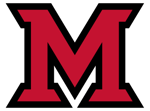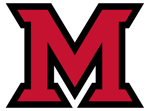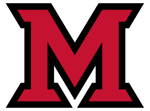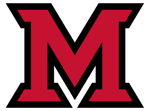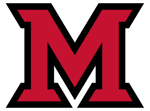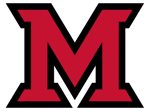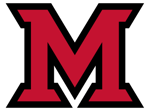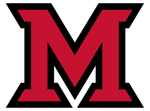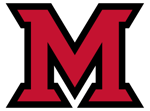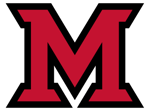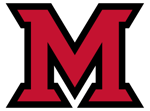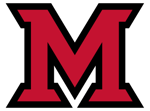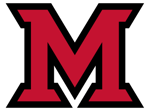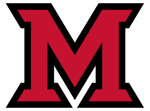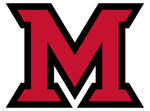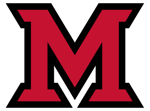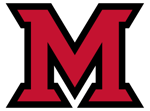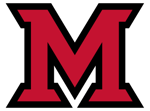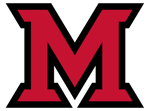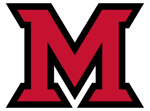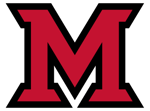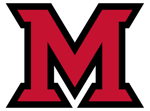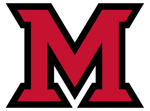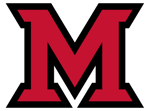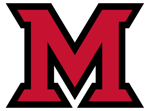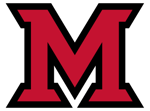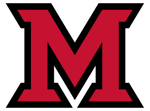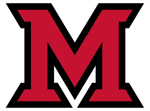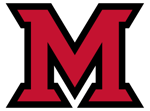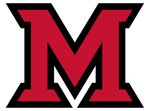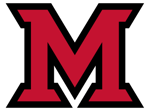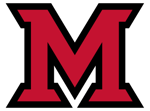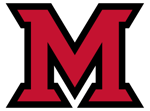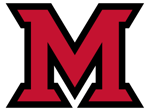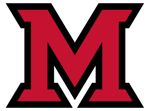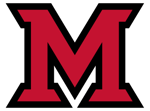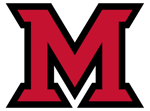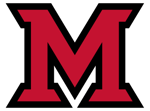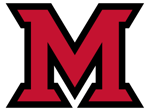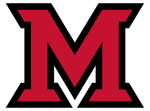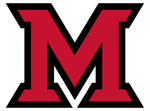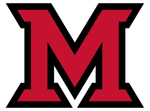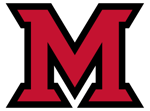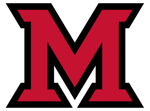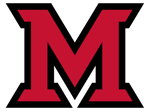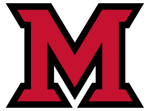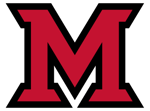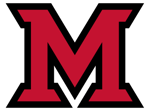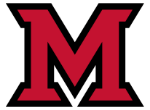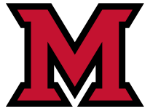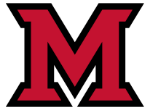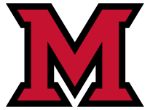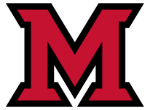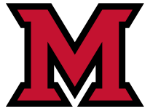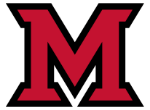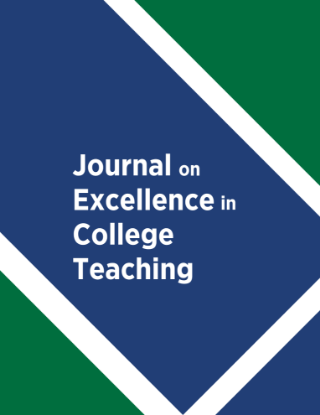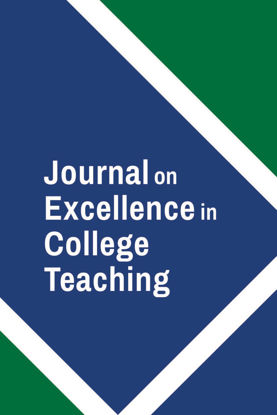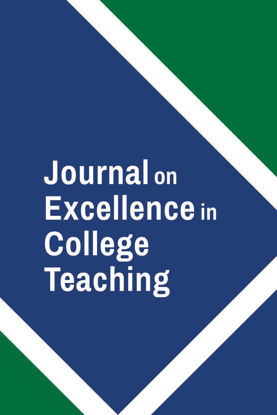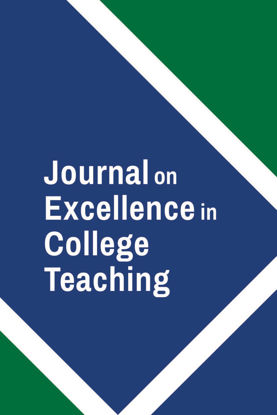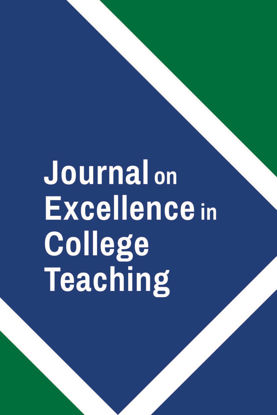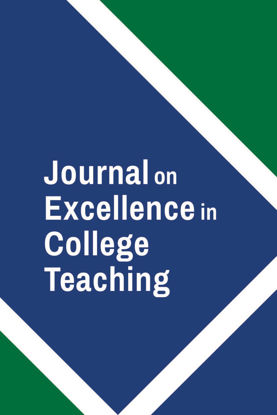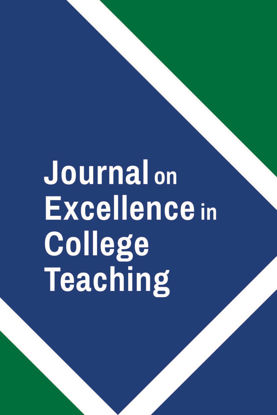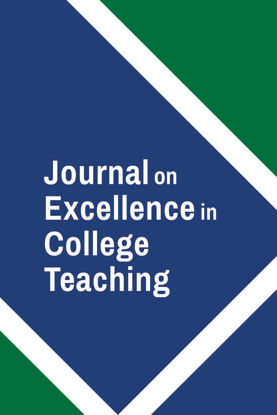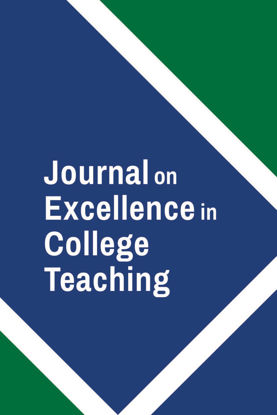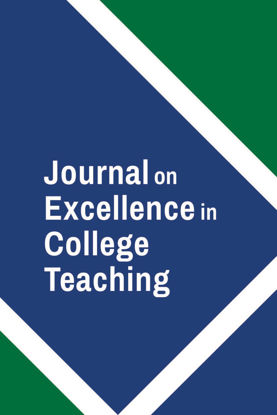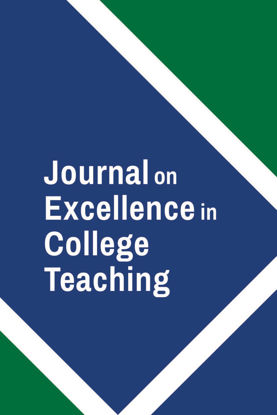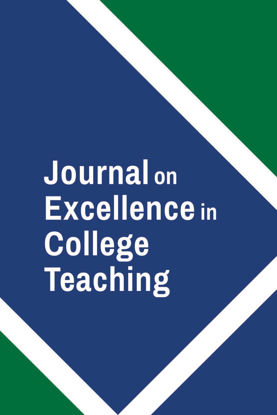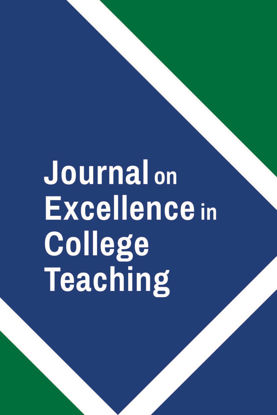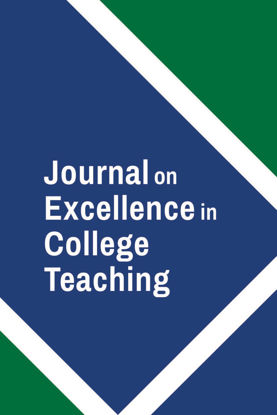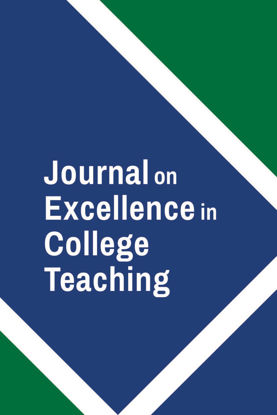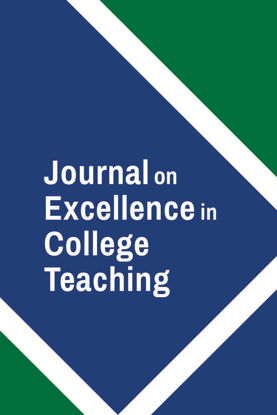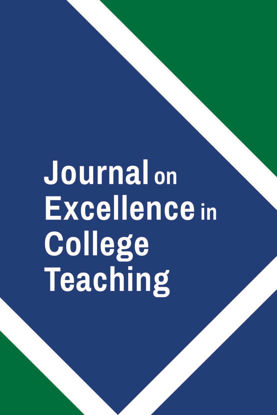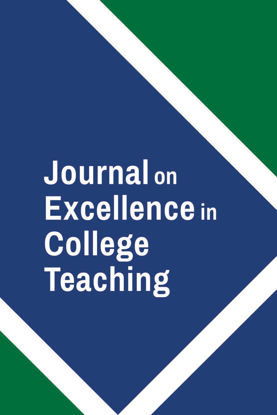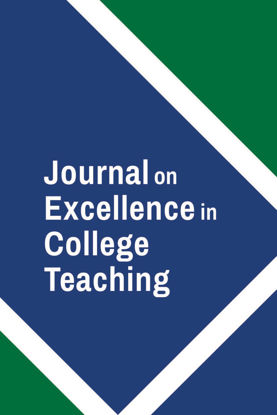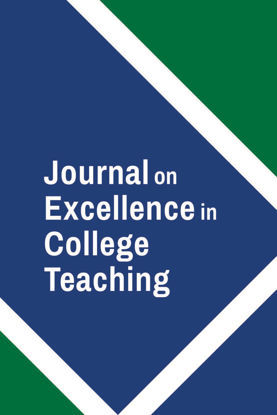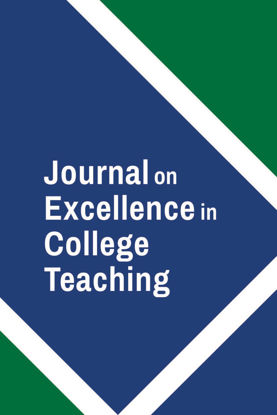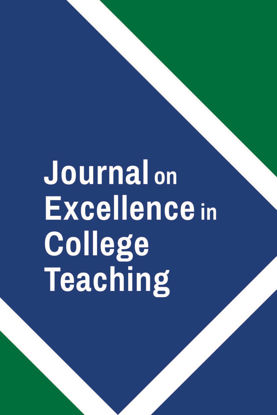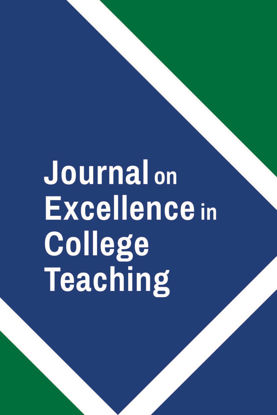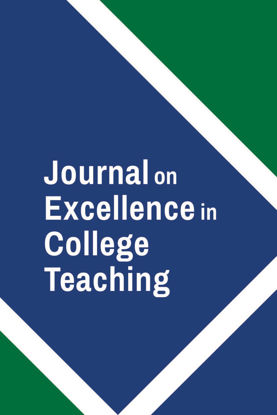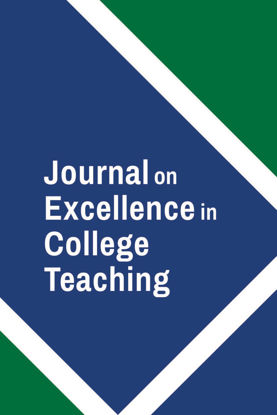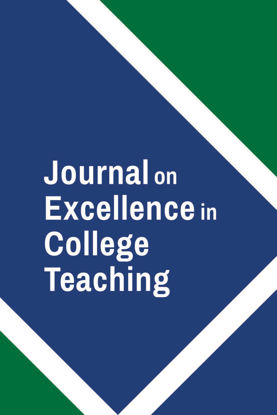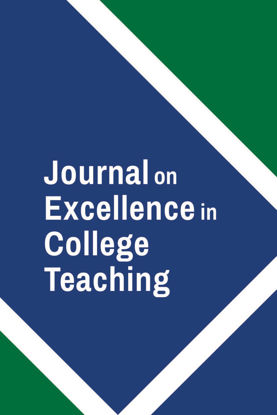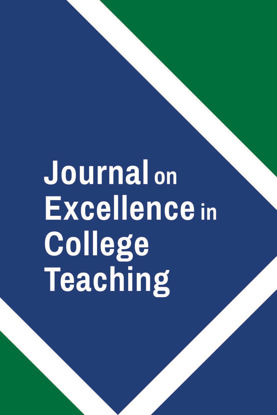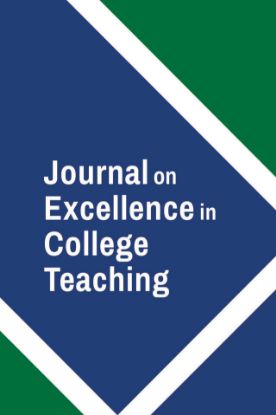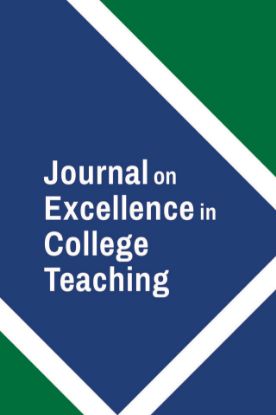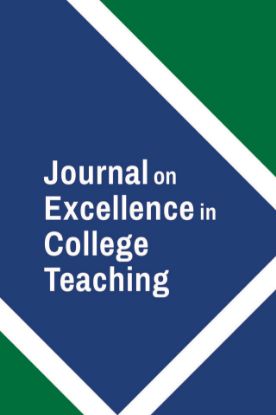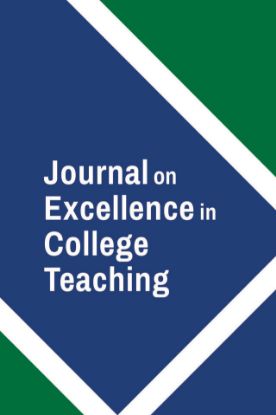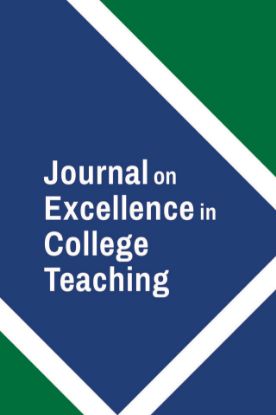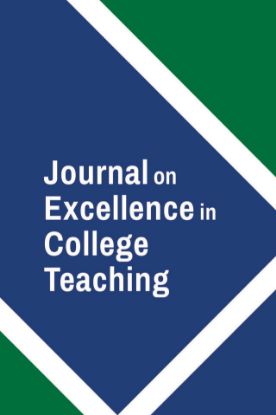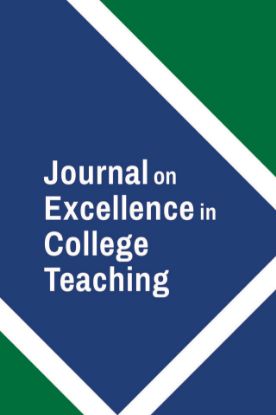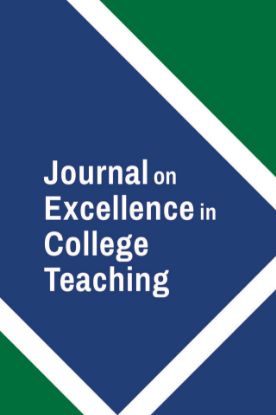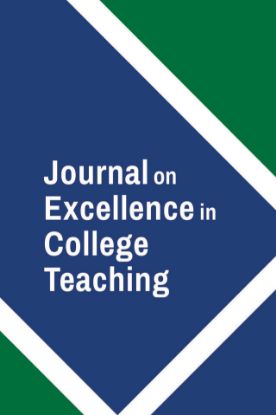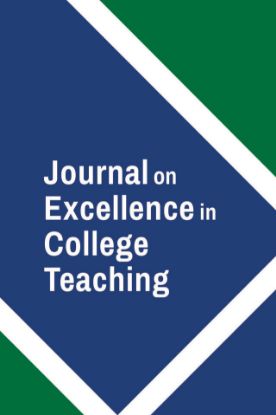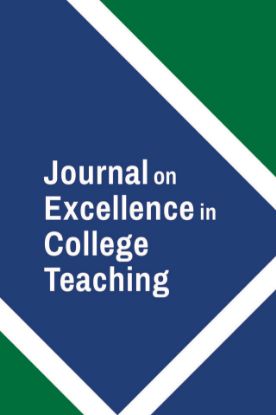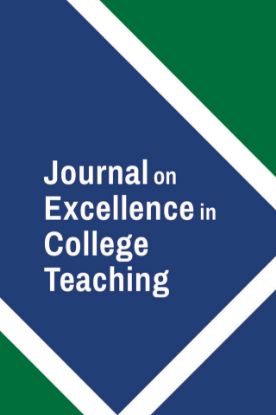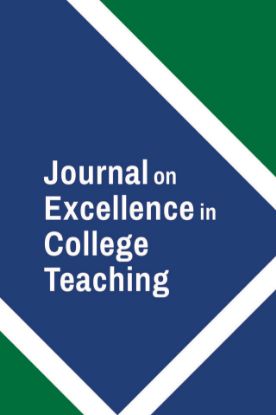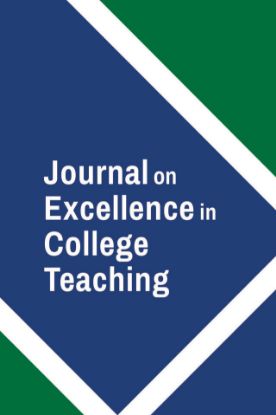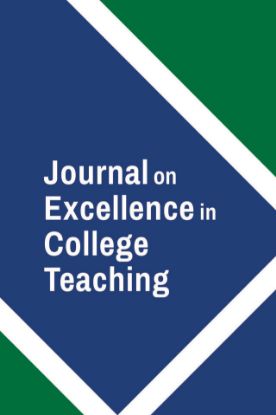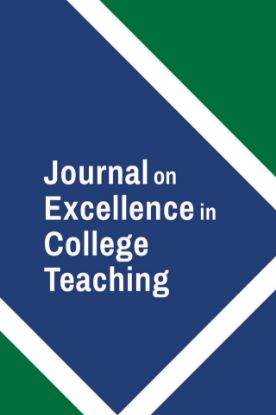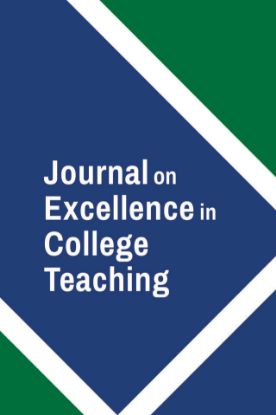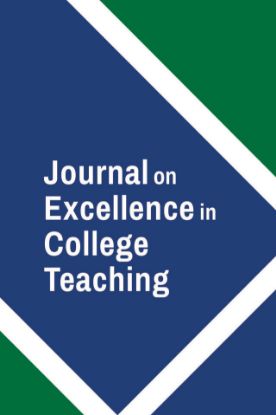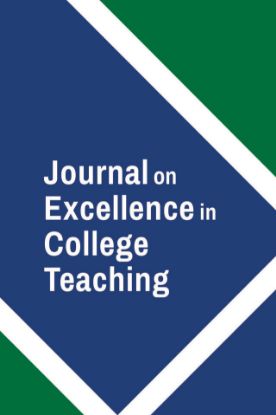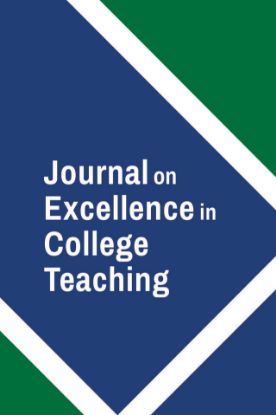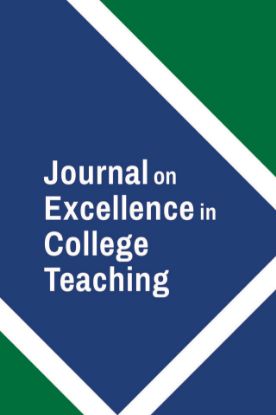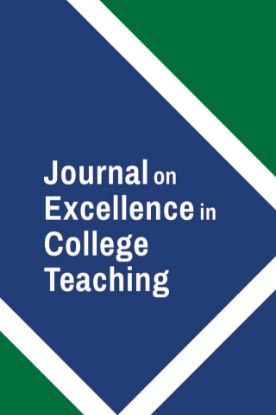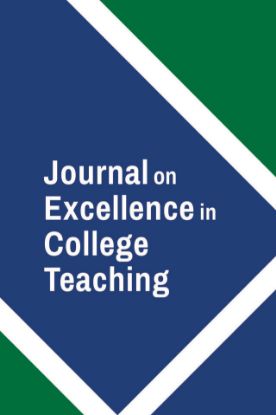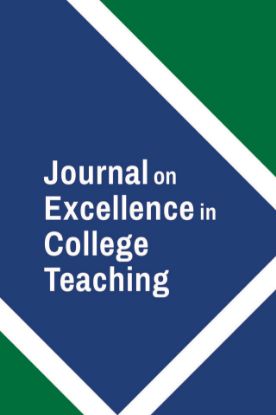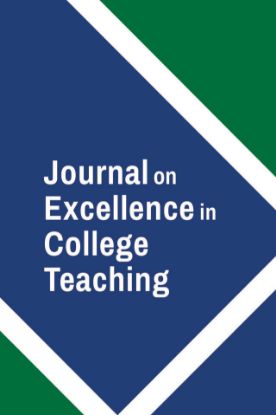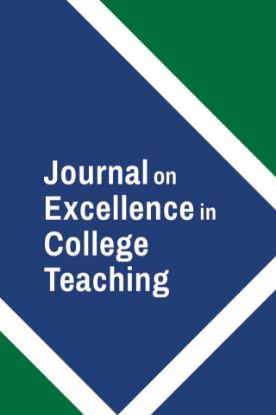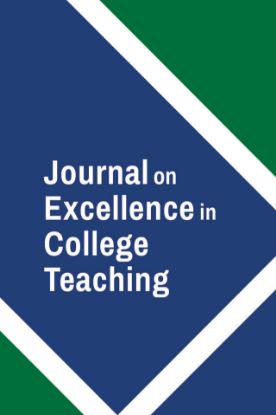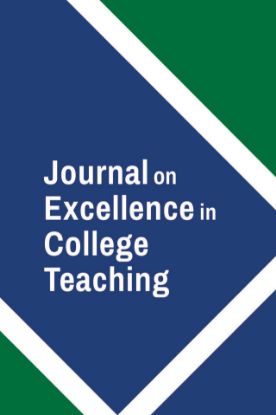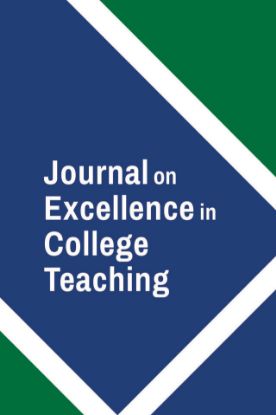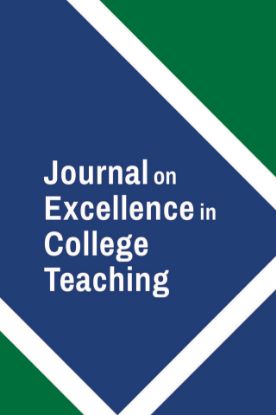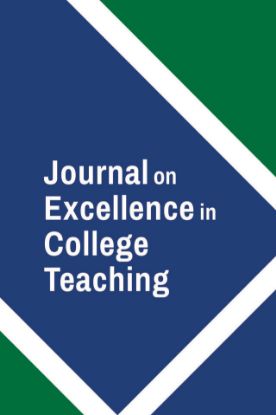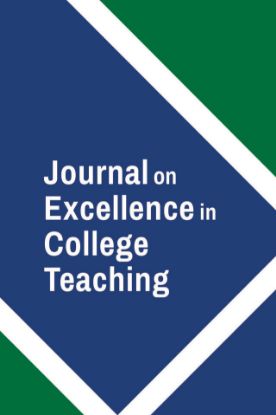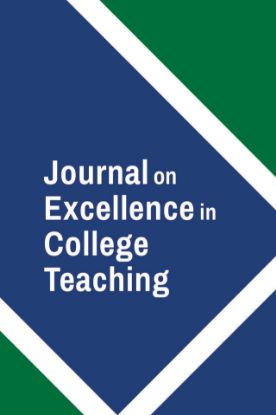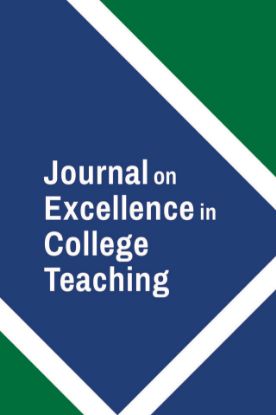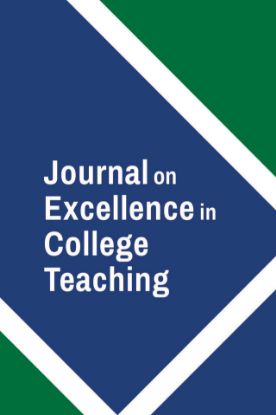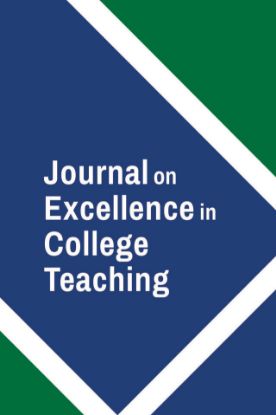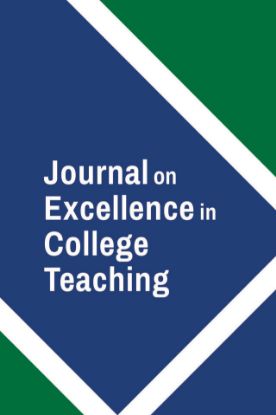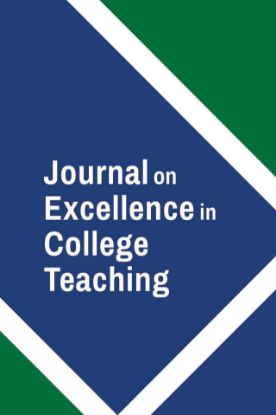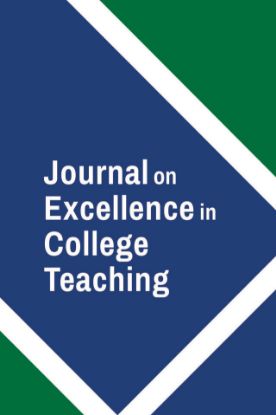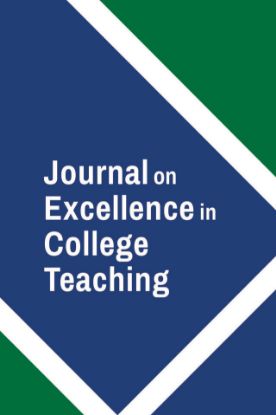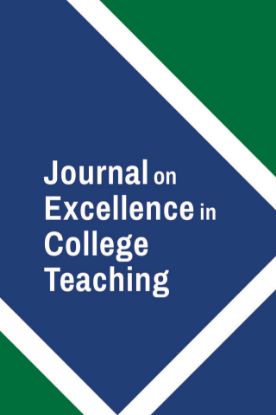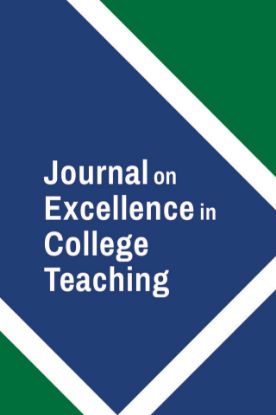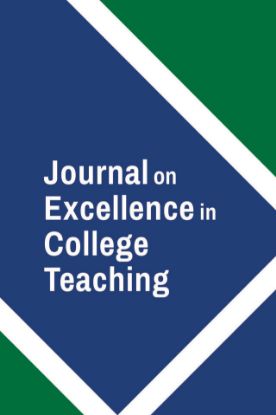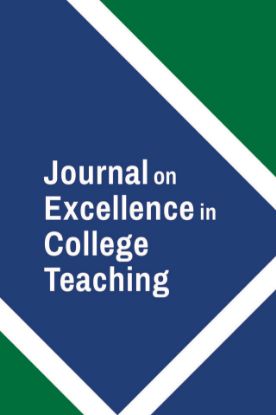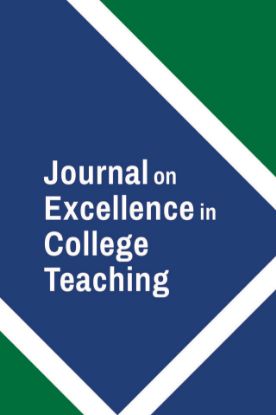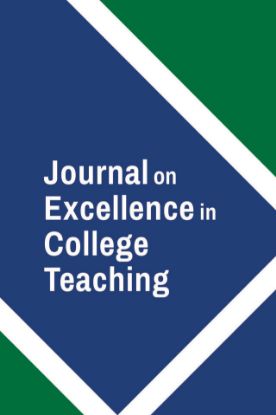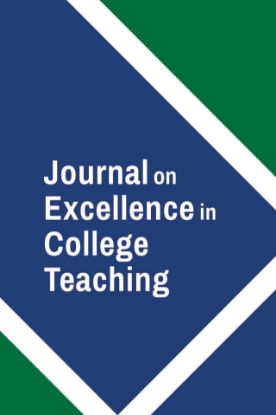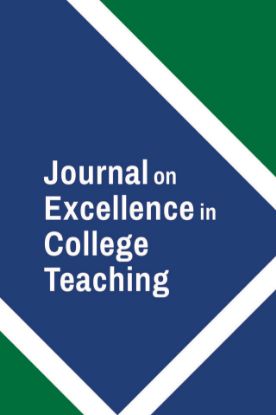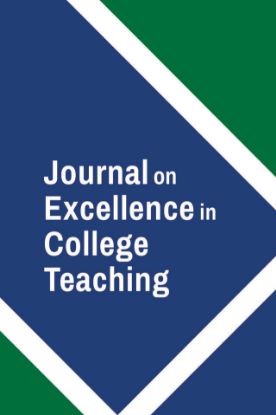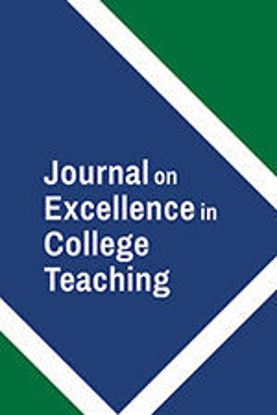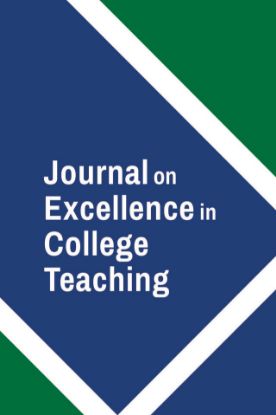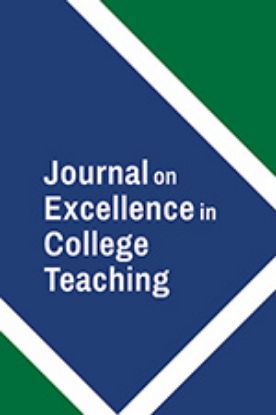Filter by price
Journal on Excellence in College Teaching
Featured products
View as
Journal on Excellence in College Teaching, Volume 2
There is a growing and respected national discussion about the relationship between teaching and research. These two vital parts of the academy are not mutually exclusive: the interplay between them forms the basis for the distinctive nature of the modern university and college. Rather than see them in opposition, there is new thinking which places both in a more inclusive view of scholarship. Within that context, a few nationally known scholars have begun to define a "scholarship of teaching." Foremost among them are Boyer, Rice, Shulman, Berliner, and Cross. Their work, focusing on teaching as an intellectual activity, complements the budding interest in learning among faculty.
$25.00
Journal on Excellence in College Teaching, Volume 3
Peter Beidler pointed out a few years ago that most people who become faculty were good at being evaluated in school, but did not become faculty because they particularly wanted to evaluate anyone else. In fact, he noted, some of the very characteristics that make some people good at getting high grades (such as ambition, competitiveness, and outstanding ability in the field) mitigate against their being interested in, or able to, grade others. As a result, many faculty find the evaluation of their students' learning (usually grading) the most onerous task of academic life.
$25.00
Journal on Excellence in College Teaching, Volume 4
Over the last 30 years, the role of teaching in academe has been ambiguous. At both established and developing universities, faculty attitudes and activities came to be shaped by the demands of, and rewards for, discovery scholarship. At two- and four-year colleges, heavy teaching assignments stifled pedagogical innovation. Faculty with an interest in teaching became confused and frustrated by the conflicting messages of mission statements and reward structures. In the narrow confines of discipline, specialization, and department, the community nourished by teaching disappeared.
$25.00
Journal on Excellence in College Teaching, Volume 5, Number 1
Does teaching affect learning? is an important question if we are to focus our efforts to improve learning on innovations in teaching. We know that virtually nothing can prevent learning. Everyone-new babies, young children, adolescents, and adults-constantly acquires new information and tries to fit it into patterns that help make sense of the world. The difference between education and other activities is that teachers and professors attempt to guide the learning process, choosing what they think is important for students to know from the vast array of knowledge in their field, and selecting the approaches that most effectively help them communicate this knowledge.
$25.00
Journal on Excellence in College Teaching, Volume 5, Number 2
New trends in college and university teaching (Cox & Richlin, 1993) develop as faculty innovate and evaluate to help their students learn. As we looked over the articles accepted for this issue, we were interested to find that several of them dealt with a subject not included in our former schema of emerging trends: namely, the important elements in student teacher relationships. This new topic led us to speculate as to why these contributors are investigating this area.
$25.00
Journal on Excellence in College Teaching, Volume 6, Number 1
This issue of the Journal on Excellence in College Teaching once again features the work, thoughts, adventures, and musings of some of the best practitioners of the scholarship of teaching in the United States and Canada.
$25.00
Journal on Excellence in College Teaching, Volume 6, Number 2
Many of the articles in this issue of the Journal on Excellence in College Teaching evolved from presentations given at the l993 College Teaching and Learning Exchange conference with the theme "Quality, Creativity, and Renewal." This conference, sponsored by the California State University (CSU) Institute for Teaching and Learning (ITL), brought together more than 700 dedicated faculty members from California and various other states and nations to share the scholarship of college teaching. The conference was held at the Fairmont Hotel in San Jose, California, adjacent to San Jose State University, California's first public institution of higher education.
$25.00
Journal on Excellence in College Teaching, Volume 6, Number 3
Lack of agreement on how to evaluate teaching has been one of the main roadblocks to recognizing and rewarding the teaching accomplish ments of faculty in colleges and universities. The perception has been that it is not possible to specify what constitutes good teaching, and, therefore, that no attempt should be made to judge instructors. Whereas scholarly productivity is measured by counting the number of publica tions accepted in peer-reviewed journals, teaching productivity cannot be measured in a similar way. As a result, teaching has been evaluated on an implicit ("I'll know it when I see it") basis. It is not that teaching has not been evaluated in higher education (after all, faculty have been hired, tenured, and promoted on the basis of their perceived teaching abilities); rather, it is that the criteria for teaching excellence have not been made explicit for either judgmental or developmental purposes. As always, we encourage readers to ponder, use, and respond to the contributions in this volume. The dialogue is entered and you are invited to participate.
$25.00
Journal on Excellence in College Teaching, Volume 7, Number 1
Although the idea of collaboration and cooperation in education is hardly new, the use of two specific pedagogies, collaborative learning and cooperative learning, has rapidly grown in prominence during this decade. These two approaches to teaching are often confused because of the similarities in their names. Collaborative learning is the broader concept and may encompass any kind of collaboration between students as well as various other forms of collaboration, such as team-taught courses, learning community models, and other interactions between faculty and students. Many regard cooperative learning as a more structured, and hence more focused, form of collaborative learning. Others view collaborative learning and cooperative learning as lying on a continuum, with collaborative learning being the least structured and cooperative learning the most structured.
$25.00
Journal on Excellence in College Teaching, Volume 7, Number 2
The articles in this issue report research and reflections that are at the forefront of several of the most important trends in the higher education classroom (see Cox & Richlin, 1993, for a full discussion of the new trends in college and university teaching). As the teacher-centered classrooms of the past are giving way, faculty are turning their attention from their own performances to the learning of their students.
$25.00
Journal on Excellence in College Teaching, Volume 7, Number 3
Classroom research based on systematic evaluation of classroom strategies provides building blocks for the improvement of pedagogy in higher education. As each instructor evaluates and reports on how methods impact student learning, we are able to construct theories to be applied and tested in other settings. It is in this way that the scholarship of teaching--in fact, any scholarship--moves closer to providing guidance for both new and experienced practitioners. The articles in this issue all present models of classroom research on improving student learning.
$25.00
Journal on Excellence in College Teaching, Volume 8, Number 1
Those involved in the higher education teaching-learning connection include students, teachers, administrators, and community members. As Cox and Richlin (1993) reported, the primary trend in the ongoing development of college teaching and learning has been an increasing complexity of interaction among those principals. Rather than communication being strictly from professor to student, our campuses now promote teacher-teacher, student-teacher, and student-student partnerships for learning, and the growth of service learning and internships now bring members of our surrounding community into partnership with both teachers and students. In addition, each college and university teacher is now being encouraged to communicate with himself or herself through reflection on his or her teaching goals, methods, and results.
$25.00
Journal on Excellence in College Teaching, Volume 8, Number 2
The articles in this issue speak to three of the most important concerns we have as college and university teachers: providing useful assessment of our students' work, encouraging our students' critical and reflective thinking, and using the best tools available to help students improve their skills. These concerns lie at the heart of helping students succeed in the world beyond the classroom.
$25.00
Journal on Excellence in College Teaching, Volume 8, Number 3
The articles in this issue are written by faculty from a variety of disciplines and institutions. The strategies they describe vary from giving weekly writing assignments to creating interactive multimedia technology to conducting marine biology research on Lake Baikal in Russia. What they have in common is that in each case the authors have involved students in improving the teaching-learning connection.
$25.00
Journal on Excellence in College Teaching, Volume 9, Number 1
The articles in this issue continue the dialogue from Volume 7, issue 2, which reported research results and reflections gleaned from listening to our students. Whereas the articles in 7 (2) describe student questions, student voices, and student opinions, the articles in this issue focus on how college and university teachers have responded to their students.
$25.00
Journal on Excellence in College Teaching, Volume 9, Number 2
Professors begin their careers as students, discovering and then falling in love with their disciplines. Often it is only by chance, rather than lifelong ambition, that the excellent undergraduate student becomes the hard-working graduate student, and then the fledgling college teacher. The development of instructors from trying to survive, to teaching skill development, and then to engaging in real collaboration with their students' learning is a journey that yields excitement and deeper commitment as time passes (Richlin, 1995). For example, new and junior faculty bring great enthusiasm for their subjects to the classroom, but learning to share this enthusiasm effectively with undergraduates is a complex undertaking (Boice, 1991). Employing faculty development strategies that build community and raise interest in teaching are effective in enabling this connection (Cox, 1995).
$25.00
Journal on Excellence in College Teaching, Volume 9, Number 3
The articles contained in this issue demonstrate particularly creative ways that their authors devised to assess their students' learning and facilitate the ways in which they are able to learn.
$25.00
Journal on Excellence in College Teaching, Volume 10, Number 1
The isolated nature of teaching is a mixed state. On the one hand, it allows the privacy and intimacy of the individual classroom and supports the intellectual freedom of each professor. On the other hand, it can be lonely to work separately from colleagues. Unfortunately, the isolation of the classroom eliminates what can be useful feedback from peers and students. Colleagues in departments engage in research seminars, but it is unusual to hold a teaching seminar. Someone once said that in this respect teaching is like sex: There is no way to compare your work with that of others. Without knowing what their colleagues are doing in their classrooms and without independent student feedback, teachers cannot be certain how their efforts "rate" in facilitating their students' learning. Could we be doing something better? As Robert Burns wrote over 200 years ago, knowing how we are perceived can "frae mony a blunder free us."
$25.00
Journal on Excellence in College Teaching, Volume 10, Number 2
An overriding quality of being a college or university faculty member is to be engaged in many areas: with the discipline, the campus, the department, and students. Yet engagement has multiple layers of meanings. It can be as simple as "appointment," "meeting," or "date." In a more romantic sense, it can be defined as "rendezvous." And, at its most complex, engagement can mean "commitment." How faculty members allot their time can determine the depth of their engagement in their different responsibilities--and the quality of the results. Best of all, interaction among these areas of responsibility can be used to further the learning of the next generation of scholars: our students. By bringing their enthusiasm for their subject into the learning environment, professors can engage their students in the excitement and issues of their discipline. In this issue, we showcase multiple levels of this engagement.
$25.00
Journal on Excellence in College Teaching, Volume 10, Number 3
With the many changes in student population and course structures over the decades since the bulk of the present American faculty were students, it has become increasingly important for professors to understand how their students make judgments about their academic work. What beliefs and attitudes affect student behavior? How can a teacher stay in touch with student progress during a course? What will aid students to be better participants in classroom discussions? How can professors communicate with students from other language communities? How do students decide which courses to take? The authors in this issue provide information and recommendations to address these concerns.
$25.00
Journal on Excellence in College Teaching, Volume 11, Number 1
In our "Message from the Editors" for volume four of the Journal (1993), we identified new trends in communication in college and university teaching. Expanding on the traditional teacher-to-student, one-way transmission of knowledge, we described emerging patterns of teacher-to-teacher, student-to-teacher, and student-to-student dialogues. The articles in this issue reflect those trends.
$25.00
Journal on Excellence in College Teaching, Volume 11, Numbers 2 and 3
The notion of learning through solving or managing problems is not new, and it is possible to trace the origins of problem-based learning (PBL) back to early forms of learning. In the 5th century B.C. Protagoras (and later Artistotle), for example, trained students in the dialectic, in which students tried to reconcile oppositions presented in a thesis or problem, and Socrates used questioning approaches to help students to explore the inadequacies of their proffered solutions (Levine & Nidiffer, 1996). A more recent connection may be found in the work of Dewey (1938), who emphasized the human capacity to reconstruct experience and, thus, make meaning of it. Dewey opposed theories of knowledge that considered knowledge specialized and independent of its role in problem-solving inquiry. Dewey's work contributed to the concept of active and experiential learning as well as to PBL (Fuhrmann, 1996), and it has been argued that PBL fits broadly into the experiential learning tradition (Biggs, 1999; Savin-Baden, 2000).
$50.00
Journal on Excellence in College Teaching, Volume 12, Number 1
The biggest change in higher education during the decade since the term "Scholarship of Teaching" was first used (Boyer, 1990) is the understanding that student learning is the sole measurement of educational quality. It is difficult, perhaps, to remember that institutional status was once measured in terms of inputs such as the number of books in the college library, the percentage of faculty members with advanced de- grees, or the amount of federal funds awarded to the institution. Since the teaching-learning connection began to be investigated in a scholarly way (Richlin, 2001), the emphasis on learning outcomes has become the primary focus, with student satisfaction an important but secondary concern.
$25.00
Journal on Excellence in College Teaching, Volume 12, Number 2
Following the 1948 Convention of the American Psychological Association, B. S. Bloom1 took the lead in formulating a classification of "the goals of the educational process" by identifying three "domains" of educational activities: the cognitive domain, the affective domain, and the psychomotor domain. The cognitive domain involves knowledge and the development of intellectual attitudes and skills. The affective domain includes the manner in which we deal with things emotionally, such as feelings, values, appreciation, enthusiasms, motivations, and attitudes. The psychomotor domain concerns the development of manual or physical skills. Eventually, Bloom and his coworkers established a hierarchy of educational objectives, generally referred to as "Bloom's Taxonomy," which attempts to arrange these objectives from the simplest to the most complex behaviors. Although the divisions are not absolutes, and other systems or hierarchies have been devised, Bloom's taxonomy is easily understood and widely applied.
$25.00
Journal on Excellence in College Teaching, Volume 13, Number 1
In his exciting new book, The Art of Changing the Brain: Enriching the Practice of Teaching by Exploring the Biology of Learning (2002), James Zull states that "it is our physical body and its interactions with the physical world that produce[s] learning, and that reality leaves us with faith that we will eventually understand the mysterious vocation, and avocation, of teaching" (p. 245). What we have come to learn from all of the sweat and thought that have gone into programs for improving teaching is that it will be our understanding of learning that makes the greatest impact on our profession. Zull's is "the first book by a practicing scientist on teaching and the brain" (p. 263). He states in his Introduction, "Learning is about biology. This obvious fact has been lurking just beneath our consciousness for a long time" (p. xiii). He goes on to say that It is one thing to point out facts about the brain and another to translate them into facts about learning. An even greater challenge is to move from any facts we may agree on about learning and convert those into facts about teaching. . . . Ultimately, we will have to reconcile everything with nature. If we find our theories about teaching to be in disagreement with biology, we must reconsider them. (p. 3) This issue of the Journal is not about the brain or the physiology of learning. However, the results presented by our authors on projects they designed and carried out within their disciplines and on their own campuses reflect successful learning that can be connected with the physical aspects of learning, including interactions with peers, community involvement, and emotional connections. Their reports demonstrate the converting of what we know about learning into successful teaching.
$25.00
Journal on Excellence in College Teaching, Volume 13, Numbers 2 and 3
The case method, at its core, is a shared effort in education. It relies upon the active participation of a host of contributors in a union established to achieve a community result greater than that which could be attained by individual effort. At many levels it is a joint venture among subjects, researchers, teachers, and students. As in all joint ventures, the most successful are those that enable all participants to benefit from the association and to learn from each other. This special issue is literally a joint venture. It is published jointly by Miami University's Journal on Excellence in College Teaching, the North American Case Research Association's (NACRA) Case Research Journal, and the Society for Case Research's (SCR) Business Case Journal. The reviewers for the articles included in this issue came from the ranks of NACRA and SCR, and I had the great privilege of acting as Guest Editor in addition to my role as current Editor of the Case Research Journal. The publication of a special issue on the case method reflects growth in the use of active learning techniques, of which the case method is a subset. Problem-based learning (PBL) has been increasingly embraced in higher education, and the case method may be viewed as a subset of that approach to learning as well. Indeed, all of the articles in this issue share the common theme that active learning in general, and the case method specifically, provides extraordinary benefits over traditional methods of instruction. The articles also seem to say that in each of the diverse fields covered in them, there is a trend toward greater use of the case method, despite the difficulties, constraints, and pitfalls inherent in the process.
$50.00
Journal on Excellence in College Teaching, Volume 14, Number 1
Creating a learning environment that is conducive to helping students become well-motivated and actively engaged learners is an ongoing challenge to instructors. Likewise, providing a supportive teaching environment that will motivate faculty to teach is an important responsibility of higher education institutions. In short, motivation is an issue that is crucial to the success of higher education.
$25.00
Journal on Excellence in College Teaching, Volume 14, Numbers 2 and 3
Almost 14 years ago, after his keynote address at the Lilly Conference on College Teaching in Oxford, Ohio, Ernest Boyer handed me his draft copy of what became his book Scholarship Reconsidered (1990) -- a generous gift to a doctoral student writing her dissertation on alternative scholarships for graduate education. I was surprised at the time that the manuscript was not the previously announced "New American Scholar" book, which Boyer was to have co-authored with Eugene Rice. Ernie assured me that Gene would be publishing his part independently. In Scholarship Reconsidered, Boyer identifies four types of scholarship appropriate for the American faculty: Discovery, Integration, Application/ Practice, and Teaching.
$50.00
Journal on Excellence in College Teaching, Volume 15, Numbers 1 and 2
There is a long and uneasy relationship between those who interpret instructional technology by emphasizing its technological component and those who emphasize its instructional component. At each new technological turn (radio, television, cable television, the Internet), a new age of learning and discovery has been proclaimed. Unfortunately, while these so-called "technological learning revolutions" have influenced the content of what is learned, none of them has had a lasting effect on the nature of the learning process itself. Why has technology had so little effect on the learning process? The primary reason is that in each situation the learning entity has remained the same -- the human being (see Clark, 1994, 2001) -- and changes in human learning capacity are evolutionary, not revolutionary. This lack of media effect on learning raises the question: If technology has little or no direct influence on learning in a technologically rich environment, then what type of pedagogy is most effective? This special issue of the Journal on Excellence in College Teaching on Web- Based Teaching and Learning (WBTL) seeks to provide an entry into the discussion regarding effective teaching and learning in a Web-based environment. The Web is currently being used to teach a plethora of college courses in both developed and developing countries. With the rapid expansion of Web-based instruction (WBI), the importance of this discussion cannot be understated. This issue begins with a discussion of the basic Journal on Excellence in College Teaching principles, guidelines, and benchmarks involved in creating effective WBTL environments and ends with a series of reflections on the nature of the journey from classroom instructor to online instructor.
$50.00
Journal on Excellence in College Teaching, Volume 15, Number 3
In the lead article for this issue of the Journal, Nancy Van Note Chism states, "Uncertainty over how to define teaching effectiveness is at the heart of many difficulties entailed in developing or administering approaches to teaching evaluation or faculty development activities" (p. 5). Yet, she continues, recruiting new teaching faculty, orienting and mentoring them into the profession, assigning teaching responsibilities, and evaluating teaching all take place routinely -- often on the basis of unarticulated, and hence unexamined, definitions of teaching effectiveness. Academic life goes on despite definitional despair. (p. 6) Chism goes on to review the literature on what the profession has discovered in its efforts to define and assess effective teaching, and concludes that there is broad disagreement. She argues for a middle ground between those who claim that the characteristics of effective teaching already are well established and those who throw up their hands in despair that teaching effectiveness cannot be defined or measured. The articles in this issue respond to Chism's claim by presenting various perspectives on what makes for effective -- and ineffective -- teaching.
$25.00
Journal on Excellence in College Teaching, Volume 16, Number 1
Being an effective teacher involves seeking out the informal and formal feedback on our efforts that is available to us. Encouraging student participation, assessing student learning, and evaluating teaching are three means of gaining this constructive input. The authors in this issue of the Journal explore the challenges as well as the intrinsic and extrinsic benefits of these undertakings.
$25.00
Journal on Excellence in College Teaching, Volume 16, Number 2
In this issue of the Journal we explore the interrelationship of the scholarship of teaching and learning (SoTL) and the scholarship of faculty development (SoFD). We begin with the SoTL on engaging students in our classes, then turn to the SoFD--How might the work of developers be examined in terms of fostering the SoTL?--and conclude with an approach to the evaluation of teaching from a sociocultural perspective.
$25.00
Journal on Excellence in College Teaching, Volume 16, Number 3
The first two considerations in teaching to facilitate learning are who we and our students are as people and learners. All of the elements that make us who we are influence how we design and conduct our courses. Thus, each of us must consider our identity as a person and as a teacher. Where did we go to college and graduate school? Was it in a similar or different type of institution than the one in which we are teaching? Have we worked in the field in which we are teaching? How many of its subfields have we experienced?
$25.00
Journal on Excellence in College Teaching, Volume 17, Numbers 1 and 2
Conditions in higher education have changed significantly in the last two decades: The student population has become much more diverse, new technologies have transformed how information is gathered and disseminated, and students and parents have developed their own ideas about education rather than accepting traditional modes without question. In response to these changes, graduate education has been forced to reexamine how effectively it prepares graduates of its programs to meet the new demands placed on faculty members.
$50.00
Journal on Excellence in College Teaching, Volume 17, Number 3
Faculty members who ignore the overwhelmingly positive benefits of group work are overlooking the circus elephant in the living room. Virtually every research study that looks at how people learn and at critical thinking emphasizes the value of group work, specifically a structured form of group work known as cooperative learning (Felder & Brent, 1996; Millis, 2002, 2006; Millis & Cottell, 1998). Studies by Michaelsen and his colleagues (Michaelsen, 1992; Michaelsen & Black, 1994; Michaelsen, Fink, & Watson, 1994; Michaelsen, Knight & Fink, 2002), using the name "Team Learning," have reached the same conclusions. Over the past 90 years, more than 575 experimental and 100 correlational studies about learning have been conducted in the U.S. These studies have produced more information about the effectiveness of cooperative learning than about any other aspect of education, including lecturing and the use of technology (Johnson, Johnson, & Smith, 1991; Slavin, 1989-1990). A meta-analysis of existing studies suggests that student learning increases by as much as one-half of a standard deviation when students are exposed to well-structured cooperative group work (Springer, Stanne, & Donovan, 1999).
$25.00
Journal on Excellence in College Teaching, Volume 18, Number 1
In his book The Learning Paradigm College (2003), John Tagg argues that colleges and universities should devote all of their energies to the "mission" of producing student learning. But what skills do students need in order to become effective learners? While it would seem obvious that articles in a journal devoted to promoting the Scholarship of Teaching and Learning (SoTL) would focus on facilitating student learning, the reports in this issue of the Journal are particularly straightforward in documenting techniques that provide a wide range of learning assistance. These techniques include teaching time management skills to students, communicating theoretical perspectives on learning to classroom teachers, the integration of out-of-class assignments, and the use of technology to leverage student learning. In each article the authors' objectives are directed toward increasing student retention and use of knowledge.
$25.00
Journal on Excellence in College Teaching, Volume 18, Number 2
Higher education continues to grapple with numerous teaching challenges as we approach the end of the first decade of the new millennium. These include an increasingly multicultural student population, greater demand for alternative teaching methods and forms of delivery, the ever-expanding use of technology in teaching, and the need to train and mentor faculty to meet these challenges. But as higher education moves from an instructional to a learning paradigm, perhaps the path to reform begins not with sweeping institutional change but with the day-to-day efforts of individual faculty members, coupled with faculty development programs to support faculty in these efforts.
$25.00
Journal on Excellence in College Teaching, Volume 18, Number 3
Assessment, or the evaluation of educational methods and outcomes with the goal of improving practice, plays a key role in the learning-centered paradigm of 21st-century higher education. In her book Assessing Student Learning: A Common Sense Guide (2004), Linda Suskie points out several benefits and beneficiaries of assessment. Students benefit because they understand better their strengths and weaknesses and thereby can work to improve their prospects in school or the professional world. Faculty benefit because assessment allows them to focus on teaching objectives and outcomes and to offer concrete evidence for the quality of their teaching. Administrators benefit because assessment can document the effectiveness of courses, programs, or the institution itself and help them make better-informed decisions. In short, assessment provides the feedback faculty and institutions need to improve teaching and learning.
$25.00
Journal on Excellence in College Teaching, Volume 19, Number 1
Empowerment is the process of increasing the capacity of individuals or groups to make choices and to transform those choices into desired actions and outcomes. Central to this process are actions which both build individual and collective assets, and improve the efficiency and fairness of the organizational and institutional context which govern the use of these assets.("Empowerment," 2007)
$25.00
Journal on Excellence in College Teaching, Volume 19, Numbers 2 and 3
Institutions of higher education have been wrestling, with various and uneven results, with ways to create more diverse faculty, staff, and student populations. The research literature and positive anecdotal reports on all of the benefits of creating more diverse environments and the positive impact for the academy and society in the ever-changing landscape of a more global world underscore why efforts to change the face of all institu- tions of learning seems clear. Yet the struggle continues. One reason for the mixed results lies in the fact that while diversifying the populations on our campuses is a noble goal, to do so without changing simultaneously the climate that these diverse populations encounter is counterproductive. In fact, such short-sighted efforts are detrimental to those whose identity, cultural experiences, and learning styles are different from those of the predominantly traditional populations that administer, teach, and learn on traditional campuses. In other words, the failure has been to focus on the quantitative aspects of diversity while overlooking and ignoring the qualitative aspects of inclusion--separating the two (like theory and research) as if there is no relationship between them.
$50.00
Journal on Excellence in College Teaching, Volume 20, Number 1
The articles in this issue propose frameworks, concepts, and theories that the authors have found help their students learn and that they propose will enable other instructors to enhance student learning. We encourage our readers to test and build upon their work.
$25.00
Journal on Excellence in College Teaching, Volume 20, Number 2
Teacher education is often thought of as the practical department in a College of Education. While educational psychologists, historians, and philosophers teach foundational knowledge to preservice teachers, teacher educators are typically looked at as teachers of the "how-to," that is, teachers of methods. To us--two former public school teachers who are now college faculty members studying methods through research and practice--asking and answering questions about methods is a fascinating and important pursuit.
$25.00
Journal on Excellence in College Teaching, Volume 20, Number 3
Some 20 years after the Carnegie Foundation brought the scholarship of teaching to prominence, the debate over its definition continues. Ironically, many academics who pride themselves on their disciplinary research do not look at their teaching from the same scholarly viewpoint. But to dismiss teaching scholarship is to lose the opportunity to gather and learn from evidence about "what works." Scholarly teaching engages instructors as part of a community of teacher-scholars dedicated to improving learning for the benefit of students, teachers, and higher education as a whole.
$25.00
Journal on Excellence in College Teaching, Volume 20, Number 4
We understand critical thinking to be purposeful, self-regulatory judgment which results in interpretation, analysis, evaluation, and inference, as well as explanation of the evidential, conceptual, methodological, criteriological, or contextual considerations upon which that judgment is based. Critical thinking is essential as a tool of inquiry. As such, critical thinking is a liberating force in education and a powerful resource in one's personal and civic life. (Facione, 1990)
$25.00
Journal on Excellence in College Teaching, Volume 21, Number 1
I expected that there might be a learning curve in the classroom, but none quite like what I experienced. Having a teacher education background and having taught graduate-level courses as an adjunct, I never believed "teaching" would be a problem for me. However, I quickly moved from being a facilitator of learning to a disseminator of information. Because I was attempting to be "all knowing," I spent countless hours reading through the text, reading supplemental articles, and anticipating questions that almost never surfaced. I placed guiding students through the learning process on the back burner. When students struggled with understanding the course content, instead of thinking differently about how I would approach the topic, I would go learn more about it. I was perplexed as to why they did not "get it." This feeling was compounded by that fact that I found myself surrounded by colleagues who had taught these courses before. (Pichon, in this issue, p. 12)
$25.00
Journal on Excellence in College Teaching, Volume 21, Number 2
"...student learning should not be confined to the classroom. …the curriculum should be designed to ensure that students have an opportunity to translate theory into practice and to apply their knowledge and skills in a practical way in the community. More extensive out-of-classroom experiences will help students widen their perspective and deepen their appreciation of cultural diversity. Service-learning, when designed into a course as an intensive immersion experience, can serve that purpose. (Bowen & Hackett, in this issue, p. 41)
$25.00
Journal on Excellence in College Teaching, Volume 21, Number 3
In his workshops with faculty, Parker J. Palmer has asked participants to focus on the "critical moments" that they have experienced in their teaching. Critical moments, as Palmer defines them, are those "when a learning opportunity will either open up or shut down for your students--depending, in part, on how you respond" (para. 22). By being asked to discuss openly the trials and triumphs they have experienced, faculty, as Palmer says, "do the one thing most necessary if we are to help each other grow as teachers: They speak honestly with each other about how challenging it is to teach and to learn" (para. 24). The upshot of such an exercise is the discovery, or affirmation, that there is no one correct way to handle our own critical teaching moments. The goal, rather, is to share and reflect with each other in order to help make our individual and collective teaching practice stronger.
$25.00
Journal on Excellence in College Teaching, Volume 21, Number 4
The increasingly diverse composition of faculty and students at higher education institutions over the past several decades has made it critical to direct efforts toward creating learning environments that ensure all learners are truly able to learn effectively. These efforts are especially necessary for ensuring the success and retention of traditionally marginalized student (and faculty) groups. Nevertheless, efforts at promoting inclusive learning on college campuses have too often been "fragmented", with a disconnect between the initiatives and their intended (or actual) outcomes (Salazar, Norton, & Tuitt, 2010, p. 8). Teaching so that all learners learn means creating and delivering instruction that "reduces all students' experiences of marginalization and, wherever possible, helps students understand that individuals' experiences, values, and perspectives influence how they construct knowledge in any field or discipline"; moreover, "thoughtfulness, mutual respect, and academic excellence are valued and promoted" (Saunders & Kardia, 2010). Benefits to such inclusive teaching efforts have been shown to include, among others, greater student motivation and self-confidence, stronger critical-thinking skills, increased cultural awareness, and a higher level of civic involvement.
$25.00
Journal on Excellence in College Teaching, Volume 22, Number 1
Learning begins with student engagement, which, in turn, leads to knowledge and understanding. Once someone understands, he or she becomes capable of performance or action. Critical reflection on one's practice and understanding leads to higher-order thinking in the form of a capacity to exercise judgment in the face of uncertainty and to create designs in the presence of constraints and unpredictability. Ultimately, the exercise of judgment makes possible the development of commitment. In commitment, we become capable of professing our understandings and our values, our faith and our love, our skepticism and our doubts, internalizing those attributes and making them integral to our identities. These commitments, in turn, make new engagements possible - and even necessary. (Shulman, 2005)
$25.00
Journal on Excellence in College Teaching, Volume 22, Number 2
The assignment pushed me out of my comfort zone and forced me to write a paper that I would normally not write and for people that I would be afraid to say hi to. The most satisfaction I got out of this assignment was that Cheryl Klein from Scholastic Publishing e-mailed me back. . . . Quickly googling Cheryl Klein and seeing that she was an editor for the Harry Potter series of books made me ecstatic. Not that she was famous, per se, but rather that my deeply personal experience of reading "multicultural" literature and my perceptions of multiculturalism had been listened to by someone with a voice in the industry creating these types of books. (student response to an assignment, in Bach, in this issue, p. 17)
$25.00
Journal on Excellence in College Teaching, Volume 22, Number 3
One of the more common concerns the Journal's editors hear voiced by instructors is that students do not read assigned material or do not read it effectively. Some of the reasons students cite for not reading are that reading assignments are too long (in their view), that they do not see the relevance of the assigned reading (perhaps because readings are not discussed or engaged in class), and that there is very little choice or autonomy offered by their instructors in terms of what or how much to read.
$25.00
Journal on Excellence in College Teaching, Volume 22, Number 4
Some professors spend hours designing courses to promote student learning. But sometimes, despite professors' efforts, students do not seem motivated to participate in the assigned activities, including reading a relevant article or the textbook, participating in class discussions, or even attending class. Why students do not always engage in their learning as we wish they would has many possible explanations, but understanding students' extrinsic and intrinsic motivations and addressing them can better prepare us to meet students where they are.
$25.00
Journal on Excellence in College Teaching, Volume 23, Number 1
The five articles contained in this issue of the Journal overlap to a certain degree, but they can be classified as follows: Two studies explore specific aspects of teaching and learning, two studies examine perceptions of effectiveness, and one study focuses on student ratings of the effectiveness of instruction. In every case, there is a good deal of previous research that has established some weight of evidence either supporting or, in some cases, contradicting the bases for these studies. But it is this point that stands out for me as a guest editor because much of that "established research" on college teaching and the evaluation of instruction is more than two decades old. It is necessary regularly to revisit social science research in order to see whether (even) well-established findings remain viable under new sets of conditions. Paradigm changes in higher education such as evolving demographics, new expectations, and the flood of new technologies have resulted in teaching and learning situations quite different from those studied in traditional classrooms between mid-century and the late 1980s. Are values different? Do students learn and do teachers teach in ways so different that we must disregard past work, or does the vast reservoir of scholarship still inform our basic understanding of teaching and learning? Ongoing examination of these issues is critical to best practice and makes the contributions in this issue welcome.
$25.00
Journal on Excellence in College Teaching, Volume 23, Number 2
While we doubt that any of the Journal's readers would align themselves with the caricature of the teacher-centered instructor above, it is possible that they have a colleague who does. The reality is that some 17 years after Barr and Tagg's landmark article, "From Teaching to Learning-A New Paradigm for Undergraduate Education" (1995), lecture still reigns as the dominant mode of instruction in many college classrooms. While research supports lecture as an effective method for delivering certain types of content (in conjunction with other methods), there is overwhelming evidence that a steady or sole diet of this instructional mode leads to unengaged students whose abilities to think critically, solve complex problems, and work together with peers-among other skills-are not being addressed.
$25.00
Journal on Excellence in College Teaching, Volume 23, Number 3
Internationalization has become a common initiative in higher education with the rise of globalization. Reflecting this trend, more international students are enrolling in institutions of higher education than ever before. In the 2010-2011 academic year, the number of international students in U.S. universities and colleges grew to a record high of 723,277, which was a 32% increase from 2000-2001. This number accounted for 3.5% of the total student enrollment (Institute of International Education, n.d.). A similar trend has occurred in Canada, where the number of international students in institutions of higher education increased from 36,822 in 1992 to 87,798 in 2008--an increase from 4% to almost 8% of all university students (McMullen & Elias, 2011). This change necessitates an increased of international teaching assistants (ITAs) and international faculty members in North America. Indeed, the recruiting, hiring, and retaining of instructors from diverse backgrounds has become a priority on institutional agendas.
$25.00
Journal on Excellence in College Teaching, Volume 23, Number 4
In Michael Wesch's (2007) now widely seen video "A Vision of Students Today" (http://www.youtube.com/watch?v=dGCJ46vyR9o), a camera pans across a large, traditional classroom where college students hold up messages about themselves as members of the current generation of learners, who have been dubbed Millennials (Howe & Strauss, 2000). The video captures some of the most notable characteristics of students today; their learning styles and needs, their hopes and dreams, and the changes they can expect to see during their lifetimes. What emerges clearly from the video is a disconnect between what and how students today often are taught and what and how they want and need to learn.
$25.00
Journal on Excellence in College Teaching, Volume 24, Number 1
Improving students' abilities to write and speak effectively have long been considered important goals of a college education. These are seen as skills that will serve students across their college careers and their professional lives. But at the same time, these abilities have sometimes been treated as secondary to subject matter learning or in isolation from specific disciplinary skills. The writing-across-the-curriculum movement of the 1980s was developed around the view of writing as a discipline-specific activity with the goal of helping students to think and write like practitioners in a discipline.
$25.00
Journal on Excellence in College Teaching, Volume 24, Number 2
Part of being a good teacher (not all) is knowing that you always have something new to learn--not so much about teaching techniques but about these particular students at this particular time and their particular sets of aspirations, confusions, misconceptions, and ignorance. . . . We will not reach all students equally, but there is something to learn about each one of them and about human learning in general. (Bain, 2004, p. 174)
$25.00
Journal on Excellence in College Teaching, Volume 24, Number 3
Advances in the methodology and tools scientists use to study the human brain continue to reveal new findings about how the brain functions, shedding an increasingly clearer light on how people learn and the many factors that influence the human cognitive process. The research behind brain-based learning has reached a point where cognitive and social neuroscientists are beginning to explain in detail the complex processes involved in learning everything from very simple lists to detailed procedures. The relative impact of advances in neuroscience on learning can be seen in the rapid increase in books, journal articles, and conferences dedicated to the interrelationship of neuroscience and human learning.
$25.00
Journal on Excellence in College Teaching, Volume 24, Number 4
How do students' and instructors' views of what constitutes effective teaching compare? Are they on the same page, or do they differ in their views of what methods work and/or how to assess outcomes? Much of the existing literature suggests that there are some significant differences in the expectations students and instructors bring to the classroom, yet there are areas of convergence as well. In truth, both students and instructors may be somewhat surprised to learn what the other truly values in the teaching-learning endeavor. The articles in this issue offer evidence-based practices for examining students' and instructors' perceptions of effective teaching and learning--both practices and outcomes. Taken together, these studies suggest answers to the question "Where can common ground be found, and how can these findings be put to use in forging greater teaching and learning synergies within and beyond the classroom?"
$25.00
Journal on Excellence in College Teaching, Volume 25, Number 1
The mission statement of the university where I teach includes the goal of empowering students "to become engaged citizens who use their knowledge and skills with integrity and compassion to improve the future of our global society" (http://miamioh.edu/about-miami/leadership/ president/mission-goals/). Many high schools, colleges, and universities, both in the U.S. and abroad, hold a similar vision of graduating generations of citizens who understand and appreciate diversity (in all its manifestations) and who are dedicated to revitalizing and strengthening a broad sense of community (in all its manifestations). Yet in many of these educational settings there remains uncertainty about what it really means for students to be engaged citizens, the specific pedagogical practices best suited to this mission--such as internships, volunteering, community service, service-learning, public scholarship, and so on--the training and competency of instructors to facilitate such practices, whether the efforts currently in place are functioning as intended, and how best they should develop over time.
$25.00
Journal on Excellence in College Teaching, Volume 25, Number 2
Ever since Ernest Boyer (1990) argued to expand the notion of what should count as academic scholarship to include teaching, there have been several important changes in what we know about the teaching-learning connection, the interplay between an instructor's teaching activities and the learning needs of students. The most important change is the move from efforts to improve "teaching" to those that improve learning. Indeed, it is now learning that is center stage in higher education. More than a decade ago, Barr and Tagg (1995) called this a change from the "instruction paradigm" to a "learning paradigm." Although all of the changes they discuss impact course design and classroom activity, the ones about the nature of learning are of particular importance. In Barr and Tagg's chart "Comparing Educational Paradigms" (p. 16), the Instruction Paradigm defines learning as something an instructor feeds in doses to passive students; in the Learning Paradigm, students "must be active discoverers and constructors of their own knowledge." A good teaching-learning connection provides active experiences and feedback, so that students have many opportunities to hear about or observe new material, try it out, and work toward mastery.
$25.00
Journal on Excellence in College Teaching, Volume 25, Numbers 3 and 4
In the past few decades, those of us working in institutions of higher education have seen an instructional paradigm shift. Given the growth in research on learning, our views of how people learn best have developed over the last few decades; from behaviorist perspectives of learning, we have also come to understand learning from cognitive and social perspec- tives. (For a more in-depth discussion of these issues, see Barkley, Major, and Cross, 2014, as well as articles in this special issue). This development has caused higher education instructors to modify their instructional practices as a result. Many instructors have moved away from a sole diet of traditional lecture, with the occasional short-answer question to the class in which students listen, repeat, and occasionally apply, toward a modified menu of pedagogical platforms in which, much of the time, students are active participants in the learning process. Higher education faculty, then, have gone about this task of engaging students actively in learning in a number of important ways by adopting a range of instruc- tional approaches.
$50.00
Journal on Excellence in College Teaching, Volume 26, Number 1
In their book for college students about how learning works, Terry Doyle and Todd Zakrajsek discuss the primacy of paying attention in or- der for genuine learning to occur. As they say, "With respect to learning, the one law that is absolute is that in order to learn we have to attend to what we are learning" (p. 99). And, although there are a variety of ways of paying attention, they write that learning takes more than casual inter- est. "Finally," they say, "there is effortful attention, which is often needed when you study or participate in class. . . . Essentially, as the skills or learning tasks become more difficult, you need to pay more attention in order to understand and learn the material" (pp. 101-102). In fact, Doyle and Zakrajsek tell college students that "It is crucial that you understand that you do not have the luxury in college to pay attention only to what interests you" [italics in the original] (p. 102).
$25.00
Journal on Excellence in College Teaching, Volume 26, Number 2
Instructors are open to-indeed, often searching for-ways to enhance their students' learning, both inside and outside of the classroom. To do so, they need to sort through the multitude of studies and articles pro- posing ideas about how to structure a course, how much of the "sausage making" to share with students, and what student activities provide the best chance of deepening their knowledge. Journals such as this one only can provide the evidence from classrooms around the world; it is up to instructors to choose the methods that will enable students to best achieve their course or program learning objectives. That is the intent with the collection of articles in this issue.
$25.00
Journal on Excellence in College Teaching, Volume 26, Number 3
One of the definitions of "catalyst" is "an agent that provokes or speeds significant change or action" (http://www.merriam-webster.com/dictionary/catalyst). In higher education, some instructors search for interventions that might provoke significant learning change or action in their own development, their courses, in the behavior of their students, and in higher education in general. Faculty who actively engage teaching and learning journals and conferences find opportunities to encounter evidence-based interventions that may be catalysts for learning and development.
$25.00
Journal on Excellence in College Teaching, Volume 26, Number 4
The President's Council of Advisors on Science and Technology (PCAST) released a report in February 2012, Engage to Excel, which called for graduating one million more science, technology, engineering, and mathematics (STEM) graduates by 2020 in order for the U.S. to maintain its historic dominance in the field. The report brought to light a daunting statistic: Less than 40% of students who intend to major in STEM are able to do so, and the major factors are identified as "uninspiring introductory courses" and an "unwelcoming atmosphere from STEM faculty." However, a modest increase in STEM graduates, to 50%, is projected to meet at least 75% of the demand. The report highlights the need to address student retention, especially during the first two years of college, when attrition is rampant. Included in the recommendations of this report are the adoption of validated teaching practices and partnerships across academic and business communities, which are relevant for the articles published in this issue of the Journal. A recent publication from the Association of American Colleges and Universities (AACU), Achieving Systemic Change (2014), identifies critical areas that can advance undergraduate STEM education, including faculty development, and curricular innovations that integrate workplace skills, all of which are echoed in this issue.
$25.00
Journal on Excellence in College Teaching, Volume 27, Number 1
I've come to believe that recognizing and then actively using [a] meta-learning perspective to analyze and evaluate your own learning experiences is particularly important, perhaps essential, to transforming undergraduate education. It is, in essence, the application of learning theory to yourself, and, as such, it is evidence of deep learning. Once I began seeing in myself examples of how learning occurs, it suddenly became easier to apply my new knowledge in the classroom. Deeply understanding the tenacity of my misconceptions made it easier to develop strategies to identify and overcome them in my students. For instance, I often now ask, "Tell me why you think that," or "Where in the text is that idea?" when students give me a wrong answer. I want to know why they think the way they do. (Mulnix, 2016, pp. 7-8; in this issue)
$25.00
Journal on Excellence in College Teaching, Volume 27, Number 2
As subject experts, most of us are eager to have our students learn our trade. We have studied, reviewed, assessed, researched, and (usually) happily transmitted what we have learned to our students and to our colleagues. But not everything that goes on in our classroom, clinics, laboratories, hearts, or brains is about content. The articles in this issue of the Journal show how instructors have gone beyond their subject matter to embrace their and their students' personal issues in learning.
$25.00
Journal on Excellence in College Teaching, Volume 27, Number 3
According to Chickering and Gamson's (1987) classic work, effective teaching embodies seven principles that are based in the research: student-faculty contact, cooperation, active learning, feedback, time on task, communication of expectations, and mutual respect. From a faculty perspective, these are time-honored, research-supported cornerstones of learner-centered teaching. But how do our students view effective teaching and learning? What needs do they feel they have as learners, and how do they believe learning occurs best? The authors in this issue of the Journal explore some of the ways that students perceive what learning is and when it is most effective.
$25.00
Journal on Excellence in College Teaching, Volume 27, Number 4
Much has been written about the so-called millennials--those born between 1982 and 2004, also referred to as Generation Y--and how grow-ing up in a digitized world has shaped their learning characteristics and preferences. Researchers argue, for example, that generational traits--such as being team-oriented, conventional, and achieving--incline these students toward collaborative learning, the use of interactive technology, and immediate feedback (Howe & Strauss, 2000, 2007). While pedagogical discussions originally focused on their experience as K-12 students, since Howe and Strauss's influential Millennials Go to College (2007) research has broadened to address this generation in the context of higher education. Across the primary, secondary, and tertiary levels, the primary focus has been on how teachers, as well as curriculum planners and administrators, should adapt to support millennials' learner profile (Gauthier, 2016; Kist, 2005). A particular emphasis on new multiple and digital literacies has led to fruitful discussions of the ways in which online technology can be successfully incorporated into the 21st-century classroom.
$25.00
Journal on Excellence in College Teaching, Volume 28, Number 1
When I was a child, my mother used to tell me that "teachers are people, too." Needless to say, I never believed her. There is nothing more frightening as a child than having your mother "run into" your teacher in the grocery store. What embarrassing details might they share about you from their separate universes? Yet, the relationship--the understanding--between students and teachers is one of the most important elements of learning. In higher education, students are expected to move from early dualistic expectations of teacher/experts to give them the answers, to becoming independent learners who see their instructors as peers and are able to judge evidence on their own. But it takes more than proximity for students to feel understood and respected by their teachers so that they can progress along the cognitive learning path. Some of the problems that keep students and teachers from the trust they need to develop involve personal biases, cultural ignorance/misunderstanding, and slow development of personal identity as separate knowers.
$25.00
Journal on Excellence in College Teaching, Volume 28, Number 2
Assessment of student learning is an integral part of academic life. According to Suskie (2009), "Assessment is part of a process that identifies what we want students to learn, provides them with good opportunities to learn those things, and then assesses whether they have learned those things" (p. 11). Most academics would agree that assessment as part of the learning process, as Suskie defines it, is at the heart of improving our teaching and our students' learning. What they might not all agree on is what constitutes effective assessment and what assessment strategies can best achieve these important goals.
$25.00
Journal on Excellence in College Teaching, Volume 28, Number 3
Students' ability to learn--including a belief in their ability to learn--is vital to success in college. In her exciting book Teach Students How to Learn, Saundra Yancy McGuire (2015) presents metacognitive, motivational, and study strategies for ensuring that students are able to learn effectively in college and, as a result, to succeed academically and achieve their personal and professional goals. As McGuire argues, learning is a two-way street, and there is much both faculty and students can do to ensure academic success. Students may need to develop their ability to think about and process information, their approach to studying and test taking, and their ability to motivate themselves as learners. Faculty may need to alter how we see our students as learners and what we teach them about how to learn. The learning strategies McGuire shares with readers can make the difference in success or failure in college and are especially important for students who arrive on our campuses unprepared for the rigors of college-level work.
$25.00
Journal on Excellence in College Teaching, Volume 28, Number 4
Institutions of higher education have become more complex as pressures for inclusivity, accountability, expanded programming, community engagement, greater research output, and better educational outcomes for students continue to increase (Bolman & Gallos, 2012). This can put great demands on faculty leaders, especially new leaders. The skills that helped faculty members rise to the top of their respective fields often are not the same skills they will need to be successful as they move into leadership roles (DePalma, English, & Sabatine, 2012). This special issue of the Journal examines coaching and related activities as a way to prepare faculty members to be more successful in leadership roles.
$25.00
Journal on Excellence in College Teaching, Volume 29, Number 1
Character matters in learning and teaching. Richard Osguthorpe, coauthor of The Moral Work of Teaching and Teacher Education: Preparing and Supporting Practitioners (2013), argues that being a teacher goes well beyond delivering content to valuing and caring about students as people--that is, that teaching is a moral undertaking. As Osguthorpe describes it, the moral work of teaching comprises "the aspects of teaching practice that are inherently connected to the moral domain--any issue that relates to what is good, right, virtuous, and caring in our personhood, actions, and relationships with others. These issues include those that are connected to the teacher being a morally good person, as well as to the teacher having an impact on the moral development of students" (Hawkins, 2015).
$25.00
Journal on Excellence in College Teaching, Volume 29, Number 2
The hottest idea in faculty development is understanding how students (your students) learn. Evidence-based research--scholarly teaching and its peer-reviewed outcome, the scholarship of teaching and learning--can inform classroom teaching behavior and lead to better student learning of your subject in your exact teaching circumstances. By evaluating how well students in your classroom achieve learning objectives with different educational techniques and theories, you can discover and refine the most efficient and effective teaching methods.
$25.00
Journal on Excellence in College Teaching, Volume 29, Numbers 3 and 4
It is with humility and gratitude that we begin to write this message from the guest editors for this special focus issue of the Journal on Excellence in College Teaching. The work being done at the universities in Hong Kong and the U.S. featured in these pages--instilling academic integrity and ethical behavior in our students, the future leaders of our 21st-century societies is a top priority for all educators.
$50.00
Journal on Excellence in College Teaching, Volume 30, Number 1
Learning in higher education is often perceived from the standpoint of the students, yet faculty are also learners. (Martinez, Castillo-Montoya, & Bolitzer, 2019, p. 5)
$25.00
Journal on Excellence in College Teaching, Volume 30, Number 2
This issue focuses on changes that were made to support students’ learning in a variety of situations and in response to diverse learning needs. The articles detail approaches to three types of innovations in support of student learning: staffing and infrastructure, pedagogy, and interpersonal relationships.
$25.00
Journal on Excellence in College Teaching, Volume 30, Number 3
The authors in this issue of the Journal explored the impact on student learning of a number of devices, techniques, and innovations that are popular (or unpopular) among students and faculty. They report their findings on everything from classroom management and use of technology to students as teachers and researchers.
$25.00
Journal on Excellence in College Teaching, Volume 30, Number 4
This special issue of the Journal on Excellence in College Teaching touches on a few of the courses, models and support mechanisms that colleges and universities in the U.S. have developed to enhance the student learning outcomes of education abroad experiences.
$25.00
Journal on Excellence in College Teaching, Volume 31, Number 1
The articles in this issue of the Journal offer insights on how to implement the COI and other approaches to enhance classroom community and promote mutual understanding
$25.00
Journal on Excellence in College Teaching, Volume 31, Number 2
The COVID-19 era has created a relationship crisis in higher education. In complying with required social distancing, adapting to (in many cases) unfamiliar teaching platforms, and accommodating the technological challenges that may be faced by learners living in different parts of the world, there is a real danger of losing touch with the human relationships that are so important to teaching and learning. Teaching is a social act; teaching is connecting. It is, therefore, now more important than ever to create and maintain connections and relationships among students and between students and instructors.
$25.00
Journal on Excellence in College Teaching, Volume 31, Number 3
Faculty and students often are not on the same page regarding what college-level learning means or requires. Students who expect to receive “the truth” or “the answer” from their professors are unnerved when they hear phrases like “it depends.” Instructors who expect students to be able to apply course concepts to new learning situations are disheartened when they struggle. If a goal of higher education is to engage students in intellectual growth, then we must begin by addressing this learning expectations disconnect.
$25.00
Journal on Excellence in College Teaching, Volume 31, Number 4
Much has been advocated in recent years to shift the focus from teacher-centered to student-centered teaching methods for effective learning. The focus on engaging students in learning is rooted in a constructivist view of learning (Hein, 1991; Tam, 2000): Learning is attained when learners actively construct their own set of meanings or understandings. Moreover, learning is conceived of as a process in which learners construct their own representations of knowledge through continuously extending and refining their understanding with the knowledge and experiences they have newly acquired (Phillips, 2000; von Glaserfeld, 1996). Modern constructivist thought also cites Vygotsky’s social learning approach (Tam, 2000), which strongly emphasizes the construction of knowledge through interaction and discourse with others (Baviskar, Hartle, & Whitney, 2009; Chen, 2001; Hickey, 1997).
$25.00
Journal on Excellence in College Teaching, Volume 32, Number 1
The articles in this issue of the Journal offer insights on how to implement the COI and other approaches to enhance classroom community and promote mutual understanding.
$25.00
Journal on Excellence in College Teaching, Volume 32, Number 3
The disruptions to life, health, and community caused by the pandemic have made it necessary to think about teaching and learning in new ways. Whether the learning occurs in a face-to-face, online, or hybrid format, college teaching will never be quite the same. In response to how the pandemic and its aftermath have reshaped the educational landscape, instructors must continue to re-examine their orientation to teaching and their relationship to students. What also stands, however, is what remains constant—the importance of a learner-centered paradigm that places students at the center of the learning experience. What role can and should instructors take to prepare students for becoming more active participants in their learning? The articles in this issue of the Journal present learner-centered strategies that promote student-faculty contact, collaboration among students, and the active engagement of students in the learning process.
$25.00
Journal on Excellence in College Teaching, Volume 33, Number 1
Engaging students in nontraditional teaching and learning settings can transform their views of themselves as learners. When they venture beyond traditional classroom walls, students encounter authentic problems, practice critical-thinking skills, and engage with people and environments to create new knowledge in ways not possible otherwise. In the case of experiential learning such as study abroad and service- learning, benefits and impacts can extend to the communities and the inhabitants with whom students engage. The authors in this issue of the Journal explore student and instructor learning in non-traditional classroom environments and other topics.
$25.00
Journal on Excellence in College Teaching, Volume 33, Number 2
The authors in this issue of the Journal present approaches for taking action to educate about diversity and accommodate diverse learners, from rethinking courses and curricula to investigating learner perceptions and outcomes of instructional innovations.
$25.00
Journal on Excellence in College Teaching, Volume 33, Number 3
The articles in this issue of the Journal respond to the need to check in with both faculty and students to support their well-being and performance as individuals, teachers, and learners.
$25.00
Journal on Excellence in College Teaching, Volume 33, Number 4
The articles in this special issue of the Journal provide opportunities for reflection, discussion, and consideration of institutional changes with respect to faculty responsibilities and whole person education.
$25.00
Journal on Excellence in College Teaching, Volume 34, Number 1
Effective instructional planning is paramount to successful learning experiences. Ideally, this commitment to success should be a shared effort by instructors and institutions. From providing faculty development programming to enhance pedagogical skills to examining the long-term impact of instruction, instructional readiness requires taking the long view in order to support the learning needs of teachers and their students. The authors in this issue of the Journal demonstrate the importance of planning for the success of instructors’ teaching and their students’ learning before, during, and after instruction.
$25.00
Journal on Excellence in College Teaching, Volume 34, Number 2
The articles in this issue of the Journal address how to design and facilitate courses and engage students in ways that will lead to enduring, authentic, and relevant learning.
$25.00
Journal on Excellence in College Teaching, Volume 34, Number 3
We are honored to dedicate this issue of the Journal to Peter (Pete) Beidler, who passed in April of 2023. Pete was the Lucy G. Moses Professor of English at Lehigh University, where he taught courses in Chaucer, American literature, Native American literature, and writing. He was named national Professor of the Year in 1983 by the Council for Advancement and Support of Education (CASE).
$25.00
Journal on Excellence in College Teaching, Volume 34, Number 4
This is the first time that the topic of social learning spaces has been featured as a special issue of the Journal on Excellence in College Teaching. In their book Learning to Make a Difference: Value Creation in Social Learning Spaces, Wenger-Trayner and Wenger-Trayner (2020) write, “We talk about a social learning space as a particular experience of engagement that takes place among people in pursuit of learning to make a difference” (p. 13).
$25.00
- 1
- 2

